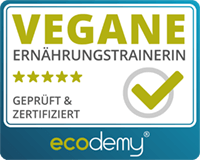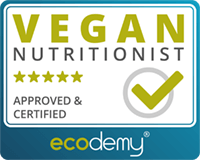Achieving Your Protein Goals As A Vegan. Part I
Is it possible to eat entirely plant-based and get the right amount and quality of proteins? — Insight of a vegan nutrition trainer

Visit activeplantbased for professional help and plant-based nutrition training.
All people, especially athletes and those who keep active, need to ensure they meet their daily need for protein, besides their optimal carb and fat intake. In this blog we’re focusing on protein.
Key Points
- It is perfectly possible to cover your protein needs while eating plant-based in both amount and quality (amino acid profile); As always, have a plan.
- Excess protein might lead to a decrease in longevity, claims a study; Re-evaluate your protein intake.
- Evaluate your protein need by calculating 1.0–3.0 grams of protein per kilogram bodyweight, depending on your bodily needs.
- Choose the plant protein type and density depending on whether you want to increase your weight, decrease it or stay the same.
- For simplicity: Achieve your daily protein goal. There is no need to have the perfect protein profile at every meal.
- Combine different plant protein sources to get a complete protein profile
- Eat the rainbow. Combine grains & legumes, veggies, mushrooms & seeds, fruits & nuts
- Certain seeds are very high in protein and healthy fats. Hemp seeds contain almost 10 grams of protein per 30 grams!
- Both hemp seeds and quinoa are complete protein sources
- Learn about your proteins and plan or consult a professional to train you
Is it possible to cover my protein needs on a plant-based diet?
Many argue that consuming the necessary amount of protein daily is not feasible when following a plant-based (vegan) diet.
It is mostly correct that plant-based foods contain a lower amount of protein. However, many animal-derived foods are lower in protein than their plant-source counterparts.
It is, in fact, possible to cover your protein needs while eating plant-based in both amount and amino acid profile.
For some, it may require effort to find a variety of foods and recipes adequate in protein because it needs planning. But then, it is not that difficult anymore.
For professional help and vegan nutrition training, visit activeplantbased.
But how much protein do I need?
Before trying to convert the protein intake from an omnivorous diet into a plant-based diet in a ratio of 1:1, it might be important to note that an excessive amount of daily protein consumption by athletes has been reported.
Not only is it a waste of money and nutritious goods, because any excess of protein will be gotten rid of with the help of your kidneys, but a steady excess of protein might even shorten your lifespan, claims a recent study.
With scientific data as a basis, a quantity of around 1.4 to 3.0 grams per kilogram of body weight is recommended.
The type and duration of your exercise should also be taken into consideration. The higher the physical demand, the higher you want to go with your proteins without exceeding the recommendation.
Also, people with particular circumstances are not accounted for in this case.

Here are some plant-based options high in protein
- Products made of legumes, such as tofu and tempeh (These are exceptionally high in protein)
- Certain meat substitutes made out of, e. g., pea protein or substitutes enriched with protein (These are exceptionally high in protein)
- Vegan protein powder (Obviously, protein)
- Seitan (wheat protein)
- Legumes, such as lentils, chickpeas, peas, lupine, various kinds of beans, etc. (Carb source with a relatively high proportion of protein)
- Vegetables like broccoli, artichoke, and sweet corn
- Mushrooms (porcini and oyster mushrooms in particular)
Tips on increasing your protein consumption
Cut down on the number of cereals in your meals and include more legumes instead.
- Replace your grains with high-protein ones, like quinoa and more vegetables.
- Add seeds to your diet daily. Certain seeds are very high in protein and healthy fats. Hemp seeds contain almost 10 grams of protein per 30 grams!
- Both hemp seeds and quinoa are complete protein sources, containing all essential amino acids.
- Mushrooms (Cremini, Oyster, King Oyster, Pleurotus, Enoki, etc.) are a great source of protein and other nutritional benefits. They are naturally cholesterol and fat-free and filled with B and C vitamins. Mushrooms are a source of iron and zinc, too!

Personal example
I weigh about 54 kilograms, and I exercise moderately.
I aim at 1,5 to 2 grams per kg bodyweight, meaning that I need to consume a maximum of 108 grams of protein per day while maintaining my calories because I want to keep my weight steady.
We don’t need to eat every amino acid at every meal and create a perfect combination because, luckily, we all have a protein pool that functions as a reserve, so we need to make sure that we achieve our protein goal and complete amino acid profile daily.
Also, we need to combine different protein sources to get a complete protein profile.
Start easy by eating the rainbow and combining grains with beans, sprinkle some seeds on top and combine your vegetables with legumes. Eat fruits and nuts as a snack.
Hypercaloric vs hypocaloric vs isocaloric
Now the question is, do you want an isocaloric, hypocaloric, or hypercaloric diet?
Important side note. By no means neglect your carbohydrate and fat needs, as they are as crucial for maintaining your energy levels as well as your performance.
The prefix iso means identical or equal, the prefix hyper means above and beyond, and hypo with an O at the end means low or under.
Iso
When you put an isolation flask, also called a thermos bottle, the heat or cold inside stays approximately the same.
Hyper
When someone is hyperactive, or something goes hyperspeed, you know it’s above and beyond average.
Hypo
And then hypo is just what is left; low. Both have an O as a letter, if that helps. Hypo has nothing to do with Hippo, by the way. :)

Here is an example of chickpeas vs tofu, two popular choices:
- 260 grams of chickpeas provide 50 grams of protein at over 800 kcal
- 300 grams of tofu provides 50 grams of protein at less than 400 kcal
Also, 260 grams of chickpeas is a lot if you have to eat it in one sitting. Keep in mind that you can process it and make various delicious things out of your foods;
If you were to make hummus, you could eat it throughout the day, on bread, or as a snack with some raw veggie sticks. You could also bake something with it or make a Tuscan mashed chickpea salad.
Goal 1: Hypocaloric
So, compared to chickpeas, tofu is a far better option if you’re looking to increase your protein intake while keeping the calories as low as possible, either to maintain your weight or lose it.
Goal 2: Hypercaloric
But, assuming you’re underweight, you might want to opt for the chickpeas to increase your calories while getting your protein in.
Make sure you are intentional with your choices and consider whether you want to maintain, increase or decrease your daily protein intake.
Important side note. This doesn’t mean you cannot eat chickpeas just because you’re aiming for a hypocaloric diet!
It just means that a) you’ll need to eat less of those chickpeas so as not to surpass your daily calories while still getting in your protein or b) eat something very protein-dense and calorie low later to not surpass your calories but get in your protein.
It’s all a game of ratios.

